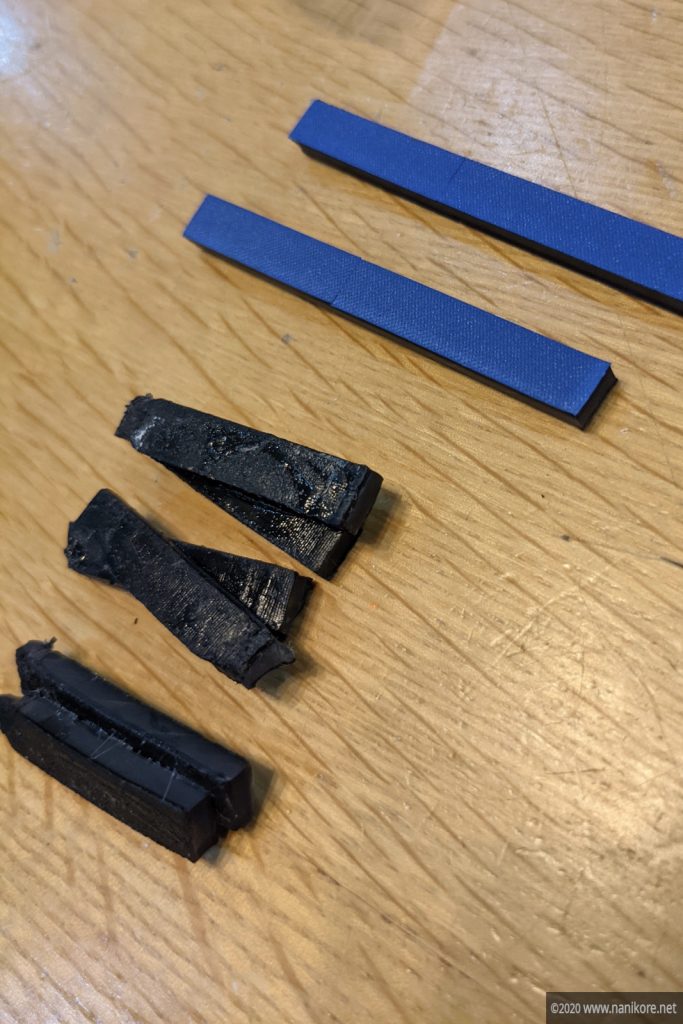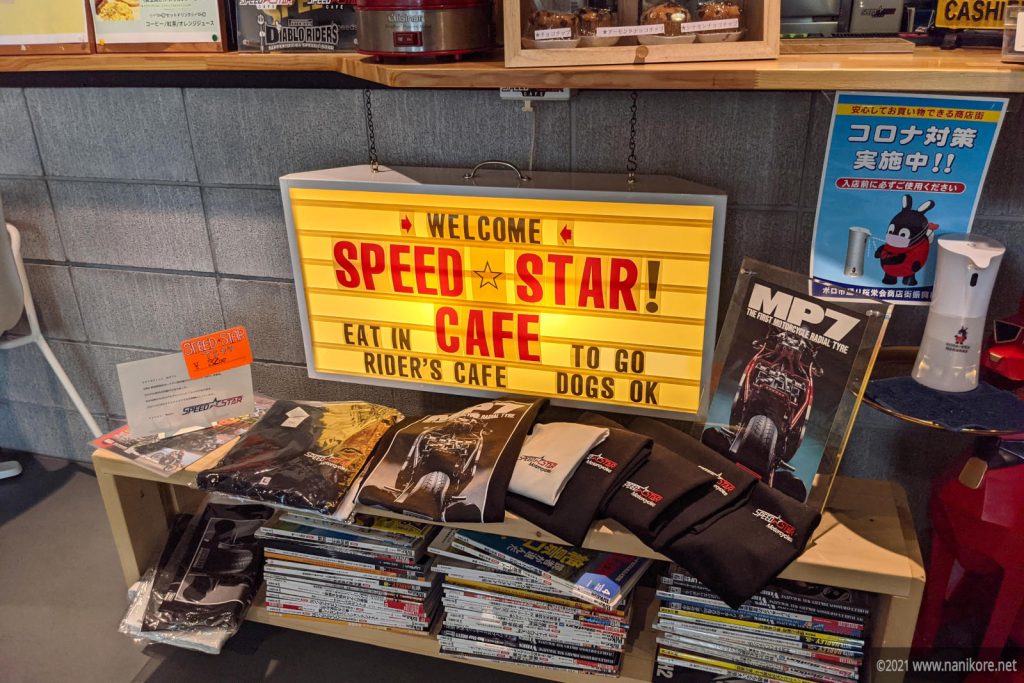I’ve always found punctures on any vehicle to be quite sad and annoying events. If they happen when you’re out and about they really ruin your day and require an amount of time and effort to get fixed – even if your car has a spare (a rarity nowadays) or inflating slime, you still need to get to the shop to get a new tyre sorted out. In the worst of cases, they can be a serious safety issue. The situation with my Tracer was fortunately not dramatic, and whilst I wasted a lot of time getting it sorted out, I did at least learn a few things along the way.
A few days ago I was riding home and had that feeling that the back tyre needed a pressure check. This was unexpected as I check tyre pressure regularly and before any kind of run out, so I stopped at a local garage, let the bike sit for a short while for the tyres to cool down, which wasn’t so easy given the air temp was around 33°C, and checked the pressure with their free air system – sure enough, the pressure was 250KPa instead of 290KPa. That may not sound like much, but I don’t let my tyre pressures get that out of spec and it’s noticeable even riding on asphalt. I put more air in and decided to check the next day. Maybe it was one of those things. (Yes, here in Japan most local petrol stations still have free air systems.)
The next morning, as I suspected, it had gone down to around 230Kpa. Something was amiss. I put it up on the centre stand and gave the rear tyre a closer inspection than I had at the petrol station. As expected there were a couple of small stones in the tread which is to be expected, and then … ah, a metallic object in one of the water draining sipes. It was flush with the surface tread, but was definitely into the tyre. Even though I was at home, I got the pliers from the under-seat tool kit (always know what’s in there and what they can be used for), and started pulling it out. This isn’t always the best thing to do, since it’s often better to leave as much air in as you can and get your plug repair kit ready, however, since I was at my house I decided there wasn’t much to lose. I got the piece of metal out without much fuss – it was about 4cm of curved steel. Not a nail or screw as I expected, but some piece of metal itself broken off from something else.
I always have a tubeless tyre plug kit, so broke it out to try to get the tyre to hold enough air to get me to a shop to see if the tyre could be professionally plugged from the inside, or if I needed a new one.
Plugging a tyre is (often) fairly straightforward. First, remove the cause of the puncture as I’d done, then use a reaming tool to smooth out belts and make a consistent hole – this should follow the trajectory the puncturing object took – then apply glue to the plug, which looks like a sticky brown shoe-lace and push it through with an applicator tool so it forms a tight ‘V’ in the hole, then yank the tool back out, leaving the plug filling the hole. Then you just need to slice the protruding parts off so the tyre can roll smoothly. It sounds a bit odd if you’ve not seen or done it before, but there’s plenty of videos on Youtube showing this (e.g. Revzilla or Motorcyclist).
To be clear, my kit did not have the brown plug types, but a uniform rectangular block type plug, which were sort-of sticky. Long story short, I tried three of these and each simply snapped when trying to push them in. This could be their design, though I still see them for sale in Daytona‘s kit (which is the one I have), or it could be because they’re four years old and the rubber has hardened. After three of the five snapped I popped to the shop and got some brown ones.
I then went through the procedure successfully with the brown type, but unfortunately the plugged tyre still wouldn’t wholly hold air, or more specifically, it wouldn’t hold enough of the 32g of CO2 I put in from the compressed gas cannisters in the kit. And yes, I felt bad letting all that CO2 out.
Why didn’t it work? When I discussed it with a couple of tyre shops I was getting quotes from, their theory was that it was likely due to the object being curved, and it being in a sipe where the rubber is thinner. Punctures are not my area of expertise, but it sounds plausible. Indeed when the tyre was removed, this seems to have been the case.
At this point then, I still had bike with a partially deflated rear tyre and the need to get it from my house to a local shop. As it would turn out, it wasn’t that difficult.
First up, we called the local motorbike gear and parts place, NAPS, and asked if they did tyre repairs, and if not, a quote for a new rear tyre of the same model. It turns out they no longer offer tyre repair, which is where they take the tyre off, and plug it from the inside with a special kit. More surprisingly the mechanic told us they wont be doing any engine repair work soon either. They did however give us a decent quote for the tyre, swapping and disposal of the old tyre.
I always like to get a few prices though, so I also called for pricing for the new tyre from Red Baron, where I bought the bike originally, and SpeedStar in west Tokyo where I usually get my tyres done. It turned out though that neither of these places were keen on trying to fix the tyre after hearing my description of the damage.
That left me with the task of getting the bike to the shop. NAPS and Red Baron had pickup vehicles, but as the Baron pointed out, I should check if my insurance would cover that, even though it’d be a third party pickup team. This actually reminded me that I do indeed have roadside assistance in my insurance for my bike, though the reseller I bought the policy through said it only could be used if I was away from my home. Only one way to find out so we called the insurance company directly, explained the tyre got a puncture on the road and I’d managed to limp it home, and yes, no problem they said, even to get to my preferred shop of Speedstar which was the furthest away but also the cheapest. A few minutes later they called back, and we were booked in for a 8.30am pick up the next day with a company called Kirin Auto.
Kirin actually turned up a bit early, with a full car sized loader. The driver was really friendly and easy going it has to be said. He couldn’t take me with himdue to insurance reasons so I’d have to go by train, but he loaded the bike up, strapped it down and we made sure we all knew where we were going. We’d also let Speedstar know the situation for when the bike turned up since I was likely to be a bit later.
There’s something faintly embarrassing about sitting on a train in bike gear, holding your helmet. I just don’t know what it is.
I’ve been using Speedstar for over a decade. It’s a small shop in the fairly nice Setagaya area of Tokyo – I actually lived just down the road for a couple of years. It only does tyres and the shop can fit just two lifts in at a time, or one enormous Harley. They operate a first come, first served system, but they also own a small cafe around the corner, so you can wait there, and they’ll even come in to tell you when the bike’s done. I’ve always liked this place – the staff are relaxed, and keen to talk, and they’re open about issues they find on bearings, axle bolt torques and anything else near the wheels. That can be helpful. I could go somewhere closer, I could go to a large franchise nearby, but I quite like the place, even if it’s a pain to get to by train for me. Also, cash discount.
So now I have a new rear Michelin Road 5 tyre on the bike, which feels great to have with its new curvy profile. It’s like slipping into a bed with new sheets with your new pyjamas.
I have 2 new CO2 bottles in my puncture kit too – don’t forget to replace consumables – and 5 remaining new brown plugs in the kit and am planning to replace them every 3 years in case the rubber ageing is a factor.
All in all, whilst the plugging wasn’t successful, it seems my technique was correct, and my kit had all the things I needed, even though those initial plugs just didn’t work. It also seems my insurance isn’t too difficult to deal with, which is something you only know when you need to use it.





